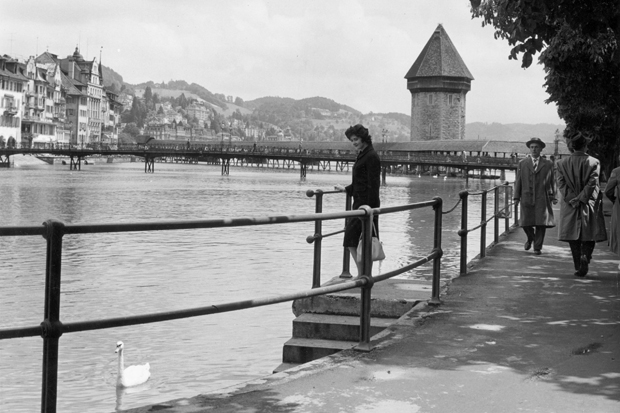When Queen Victoria came here for her summer holidays, Lucerne was already a bustling tourist destination. Today it’s just as popular. It’s easy to see why. When you emerge from the busy train station (Lucerne is far too civilised to have an airport), Switzerland’s loveliest lake lies before you, framed by a ring of mountains. The forecourt doubles as a quay. If you like looking at the Alps but can’t be bothered to trek up them, Lucerne will suit you perfectly. You can sit in a quayside café and gaze at them all day.
Lucerne’s biggest draw is its summer music festival (15 August to 14 September this year) which brings together Europe’s greatest orchestras. The Berlin and Vienna Philharmonic and Leipzig’s brilliant Gewandhaus are all here this year. This Teutonic accent is apt. Lucerne is the cultural heart of German-speaking Switzerland, and its annual musikfest began in 1938 as an impromptu season of al fresco concerts for musicians who didn’t fancy performing under Hitler’s swastikas in Salzburg or Bayreuth.
That first festival was staged in the gardens of Tribschen, an idyllic lakeside villa where Wagner lived from 1866 to 1872. Today it’s a museum. Looking out across the water, you can understand why Wagner was so happy here. He married his beloved Cosima, who bore him two children, and finished The Mastersingers of Nuremberg here. The journey here is just as nice — a 40-minute stroll along the waterfront, or 20 minutes on the ferry. I like to walk here as slowly as possible, then catch a boat back into town.
If you’re feeling (a bit) more energetic, the most enjoyable excursion is the so-called Goldene Rundfahrt (golden round trip) which carries you up Mount Pilatus, the highest peak in these parts, by gondola and cable car, down the other side by cog railway (the steepest in the world) and back into Lucerne by steamship. It feels like an adventure, but it’s actually supremely leisurely. If you want a proper hike, take the ferry to Weggis and walk up Mount Rigi. It’s not quite as high as Pilatus, but the view is even finer.
Of course the big downside of Lucerne (or almost anywhere in Switzerland, for that matter) is the prices. Thirty years ago, when I first came here, a pound bought three Swiss francs, which felt pretty stingy. Today it’s barely one and a half, which means your ticket for the Goldene Rundfahrt will set you back about 60 quid. The Brits put Lucerne on the tourist trail, but it’s no surprise that nowadays the most prolific sightseers are Chinese.
There’s no beating these rotten exchange rates but there is one upside to our modern penury. Do as the locals do and you’ll spend a lot less money and have a lot more fun. Swim in their stylish lidos and eat lunch in their homely markets, and you should have enough cash left over for a decent hotel — well, just about. Last time I looked, dinner, bed and breakfast for two at the Astoria (a sleek high-rise by Herzog & de Meuron) cost about £200, a bargain by Swiss standards. It’s right opposite the Rosengart Museum, with its superb Paul Klee collection, and the rooftop terrace is a great rendezvous.






Comments